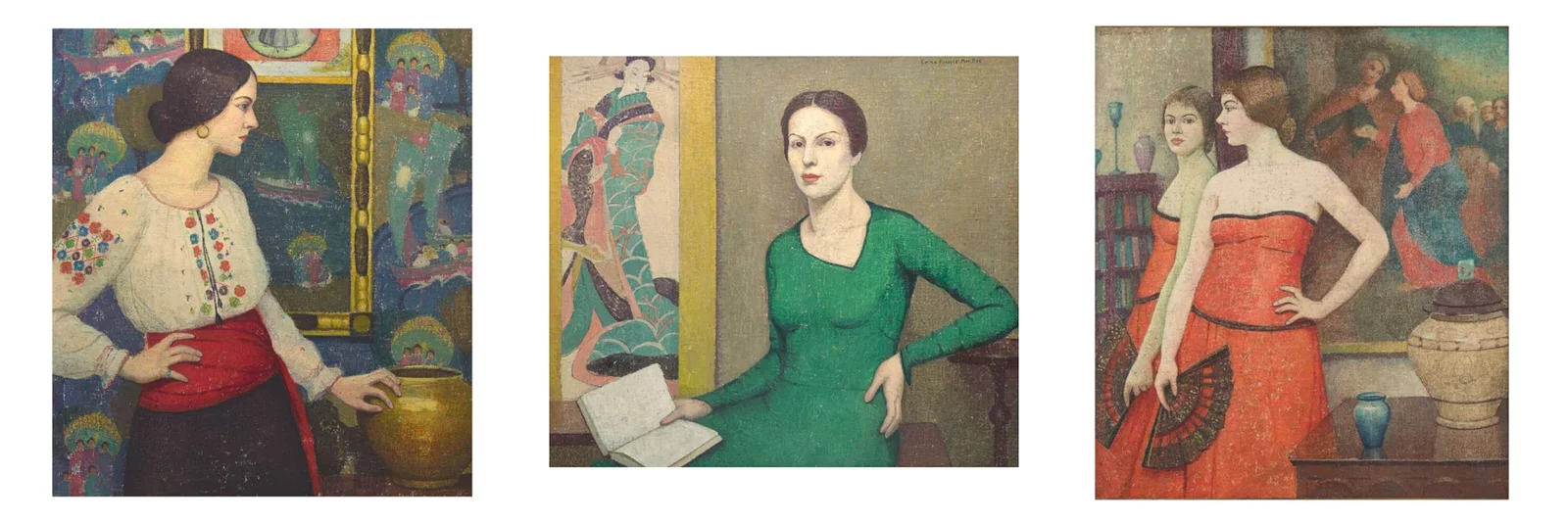Emma Fordyce MacRae: The Modern Weaver
Half Moon Beach (Green Umbrella), currently on view at Freeman's | Hindman’s 32 East 67th St Manhattan galleries
A Summer Exhibition in New York from August 11 to September 12
This summer, Freeman’s Hindman will present “The Modern Weaver,” a focused retrospective staged in New York City that reintroduces the refined, often enigmatic work of Emma Fordyce MacRae. Featuring a selection of a dozen works consigned directly from the artist’s estate through Alzheimer’s Research UK, the exhibition offers a rare opportunity to engage with paintings that have remained largely unseen by the public. Most of the works on view will be offered for sale later this season, with 100% of proceeds benefitting ongoing research into Alzheimer’s disease and other forms of dementia.
Spanning four decades of artistic production, the exhibition surveys MacRae’s sophisticated visual language, one that wove together elements of classical composition, East Asian aesthetics, and modernist restraint. As such, it offers a rare and comprehensive look at one of the 20th century’s most stylistically distinctive, yet historically underrecognized, American modernists.
A Painter of Pattern, Mood, and Mystery
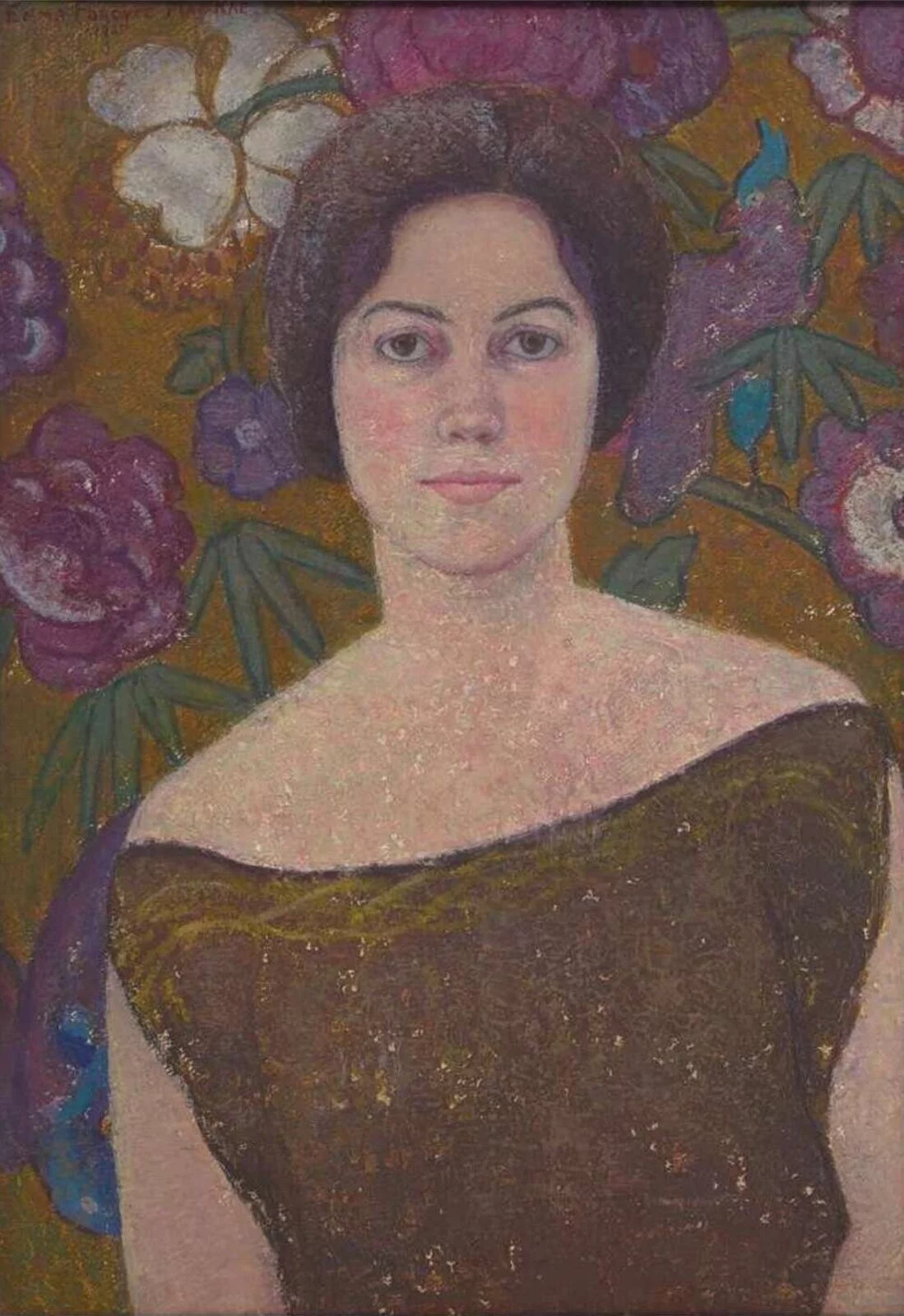
Self-Portrait in Brown (1925), sold at Freeman’s | Hindman for $21,420 in 2022.
Born in Vienna in 1887 to American parents, Emma Fordyce MacRae trained at the Art Students League and the New York School of Art, where she studied under Kenneth Hayes Miller, a pedagogue renowned for emphasizing compositional rigor and design over expressive gesture. These lessons profoundly shaped MacRae’s approach, fostering a lifelong commitment to structure, balance, and surface modulation.
She began exhibiting in 1918 at the Pennsylvania Academy of the Fine Arts and soon went on to become a vital member of The Philadelphia Ten, a collective of women artists who, from 1917 to 1945, carved out their own legacy by exhibiting their work together in order to counterbalance the male predominance in the art world.
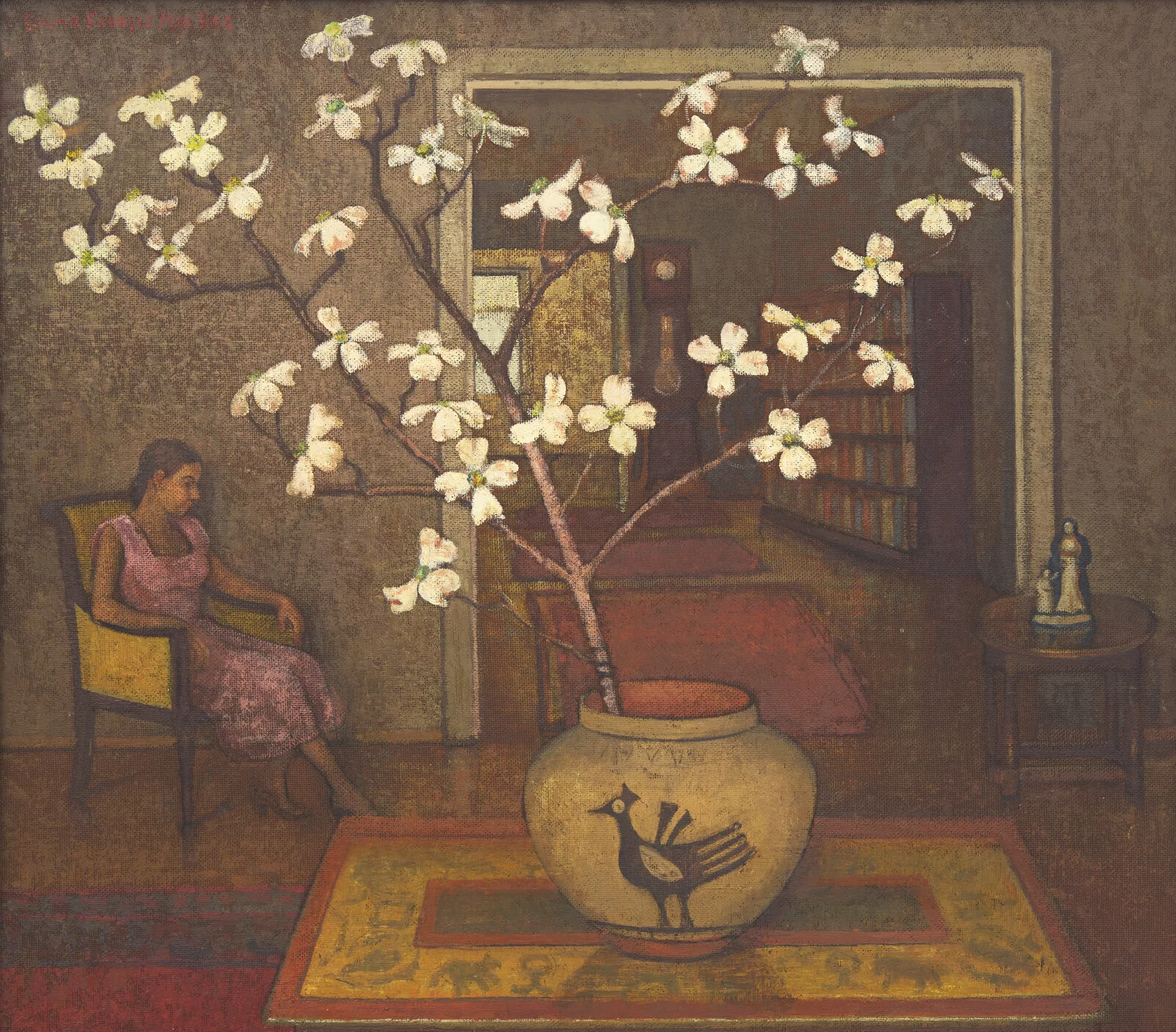
Dogwood in Hopi (1954), currently on view at Freeman's | Hindman’s 32 East 67th St Manhattan galleries
As her work evolved, MacRae carved out a personal idiom that reflects a transhistorical fusion of influences: the decorative elegance of Japanese woodblock prints, the compositional clarity of early Italian Renaissance painting, and the graphic design sensibility of American urban realism and Modernist design principles.
A Singular Voice
While best known today for her floral still lifes (often set against stylized domestic backdrops) her portraiture remains her most critically lauded body of work. A reviewer for the Main Line Times once observed about those: “Her portraits are arresting, not because of the people (...) but because of the extraordinary sense of pattern and harmony of time. They are simple but forceful compositions.”
It is true that MacRae’s portraits transcend realism. Her figures often appear stylized, emotionally opaque, and anchored within meticulously rendered spaces. The result is a synthesis of cultural traditions that lends her work a visual stillness—and a psychological ambiguity—that separates it from her peers.
Timeless Texture
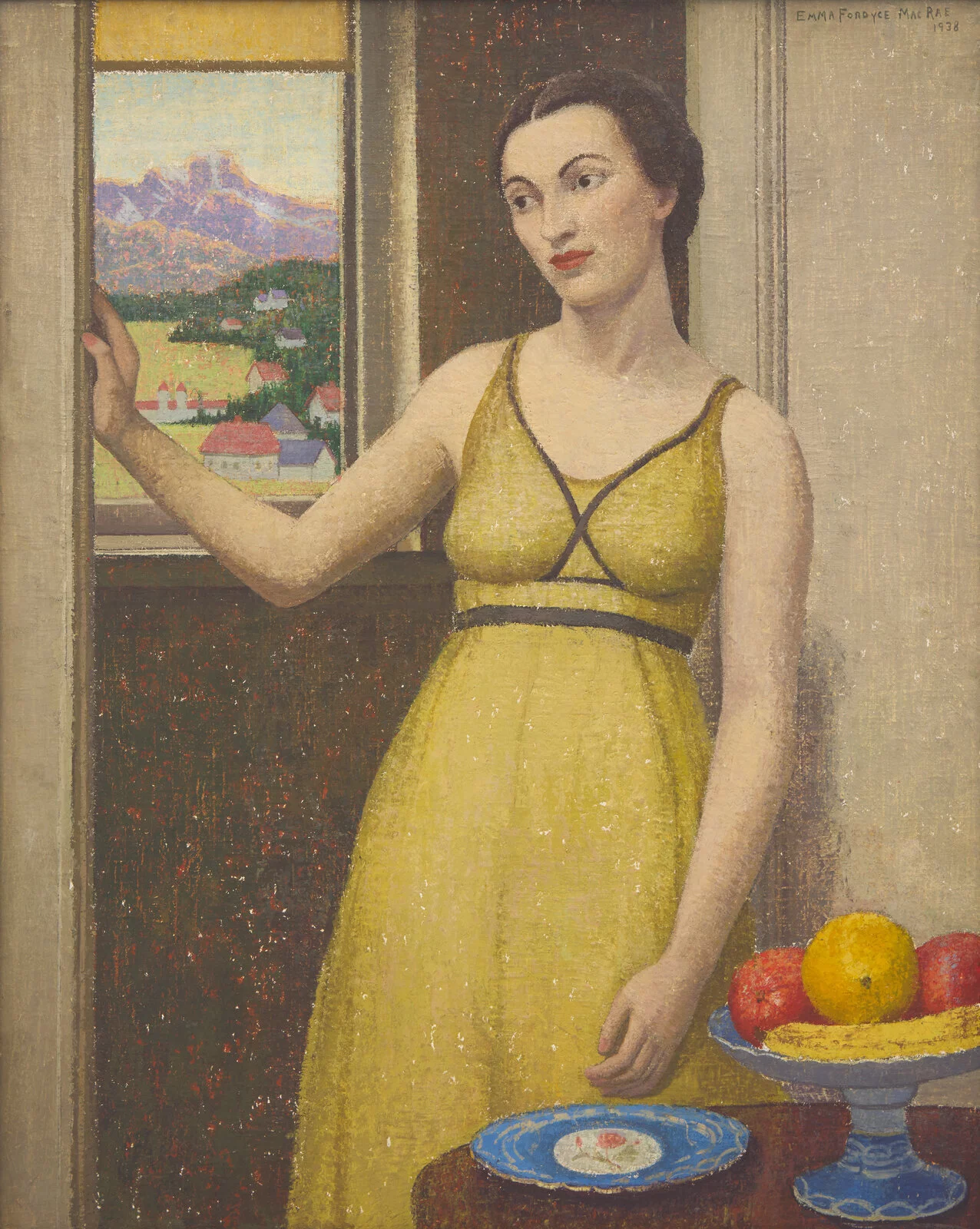
Distant Mountains (1938), currently on view at Freeman's | Hindman’s 32 East 67th St Manhattan galleries
While many of her contemporaries pursued lush impasto and expressive brushwork, MacRae favored a minimalist application. Her use of paint was sparse, almost dry, revealing the grain of the canvas beneath, lending her surfaces a plaster-like delicacy. This sparse approach, as one critic observed, imparted a “cool, detached… almost impersonal note,” contributing to the timeless quality of her work.
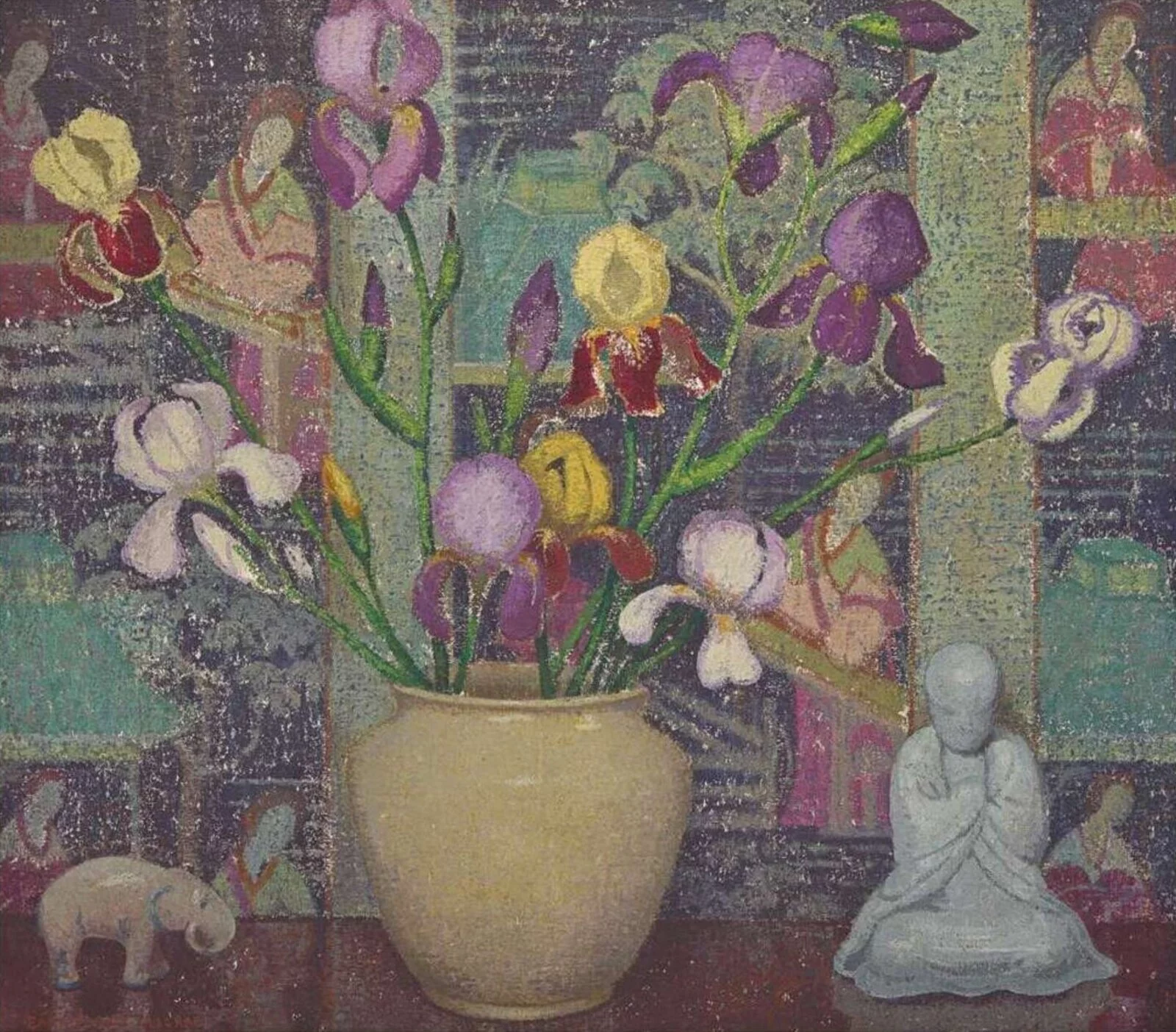
Iris Decoration, sold at Freeman's | Hindman in 2022 for $30,204
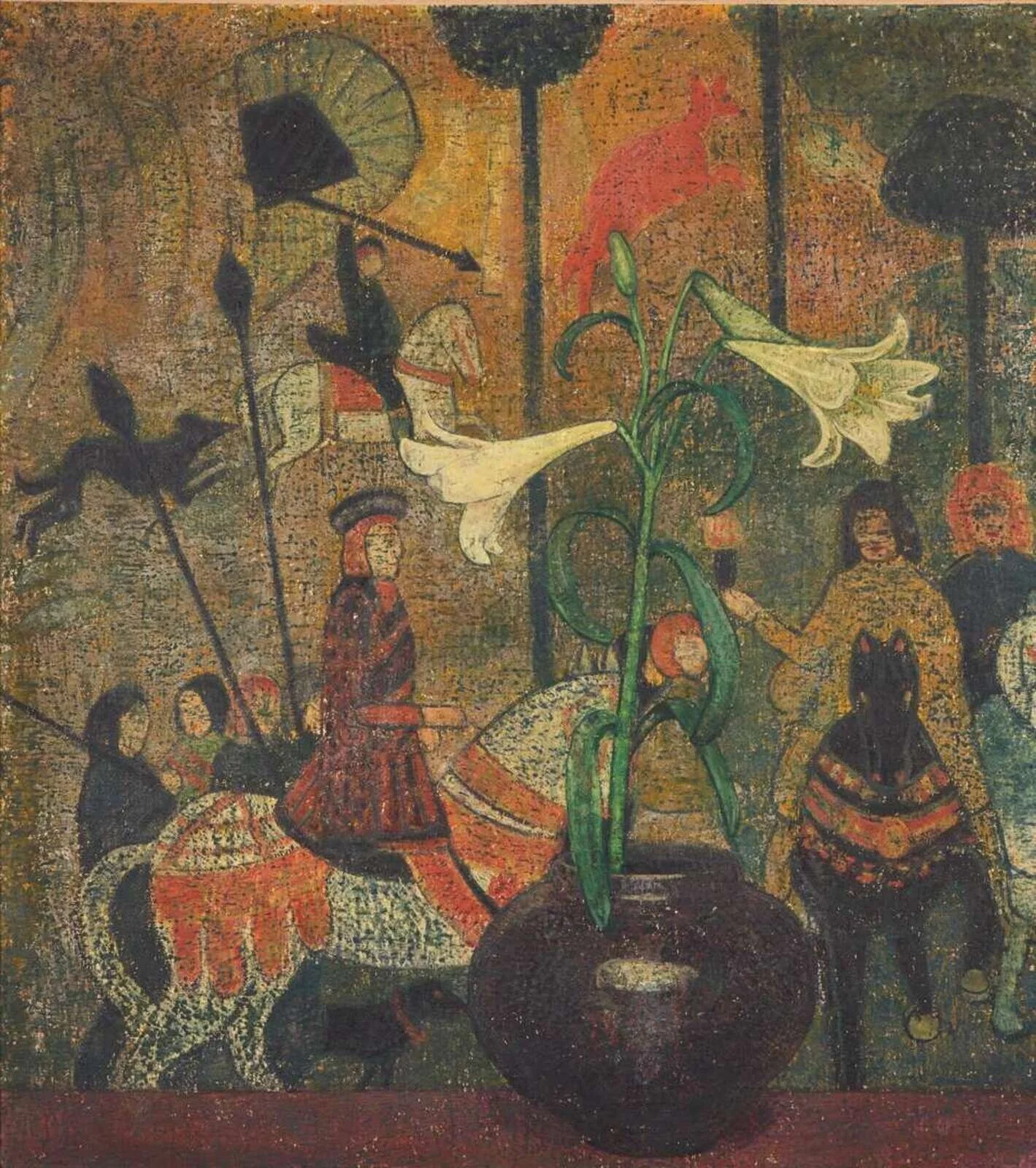
Easter Lilies, sold at Freeman's | Hindman in 2024 for $27,940
At a 1930 exhibition at the Roerich Museum in New York, writer Frances R. Grant noted: “A loveliness of old textures constantly suggests itself in the work of Emma Fordyce MacRae... her paintings transmit the warp and woof of color and light, until her mood is delicately and subtly created.”
A Market Reawakened
Caption: From left to right: “Stelka” (1929), sold for $69,300 in 2022 (still a world record for the artist); “Melina in Green,” sold for $63,000; “Interior with Red Tapestry,” sold for $40,950.
Though she exhibited widely during her lifetime, specifically in New York, MacRae was not a prolific seller. For decades, her market remained relatively quiet save for episodic sales at Richard York’s galleries in Manhattan.
Many of her paintings remained in family holdings in the United Kingdom, limiting their visibility in the United States. That changed in 2008 with the succesful Cape Ann Museum restrospective, and even more in 2021 when Freeman’s introduced her to a new generation of collectors on the open market. That year, the house set a record with Melina in Green, followed six months later by Stelka which shattered that record at $69,300.
The latter, a richly stylized 1929 portrait that won a gold medal at the National Arts Club, was acquired by the James A. Michener Art Museum, a leading institution in the reassessment of women artists of the Delaware Valley. According to Dr. Laura Turner Igoe, Chief Curator: “In recent years, we have focused our efforts on acquiring work by women affiliated with the Philadelphia Ten... Recent acquisitions of Emma Fordyce MacRae’s Stelka allows us to feature more of the women affiliated with this group on our gallery walls.”
Such institutional acquisitions mark a significant shift in the reception of MacRae’s work, validating her contributions not only to the history of American modernism but also to feminist art historiography.
A Legacy Renewed
As renewed academic and market interest converge, MacRae’s work is finally gaining recognition for its unique synthesis of past and present, East and West, structure and emotion.
Alasdair Nichol, co-Chairman of Freeman’s Hindman, recalls: “While I always revered her work, I didn’t have much luck with her paintings initially... But scholarship around the Philadelphia Ten—and Pennsylvania women artists in general—has finally caught up with her talent.”
MacRae lived and worked in New York for much of her life—residing at 888 Park Avenue and maintaining a studio at 12 West 69th Street until her death in 1974. It is fitting, then, that this current exhibition is held in Manhattan, allowing visitors to experience her refined visual world in the city where much of it was conceived. Through portraits, still lifes, and interiors, Emma Fordyce MacRae: The Modern Weaver reintroduces a singular voice in American painting—one whose restraint, formal clarity, and transcultural sensibility place her firmly within the lineage of early modernist innovators.
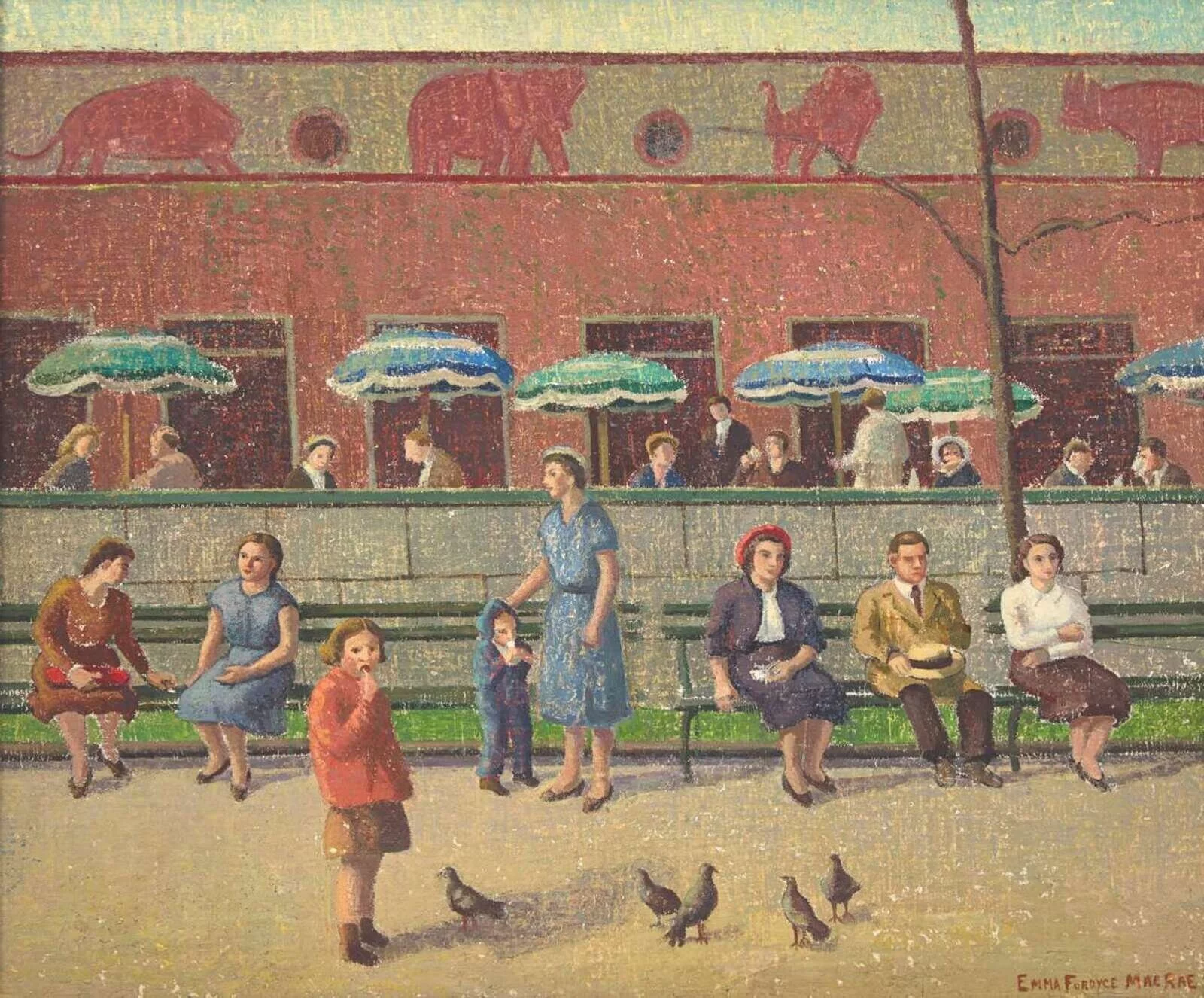
Central Park Restaurant sold at Freeman's | Hindman in 2023 for $22,680
As curator Raphaël Chatroux puts it: “This exhibition does not merely reclaim MacRae’s place in history; it underscores her enduring relevance in contemporary dialogues around gender, design, and the quiet power of painting.”
